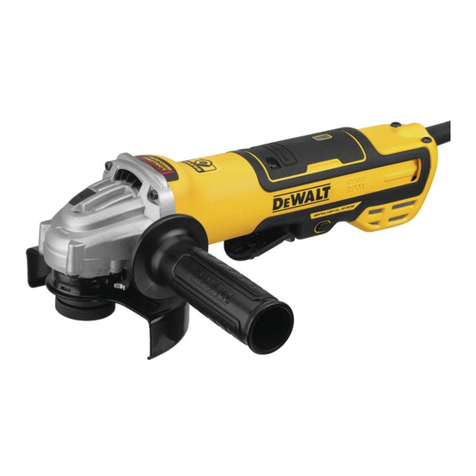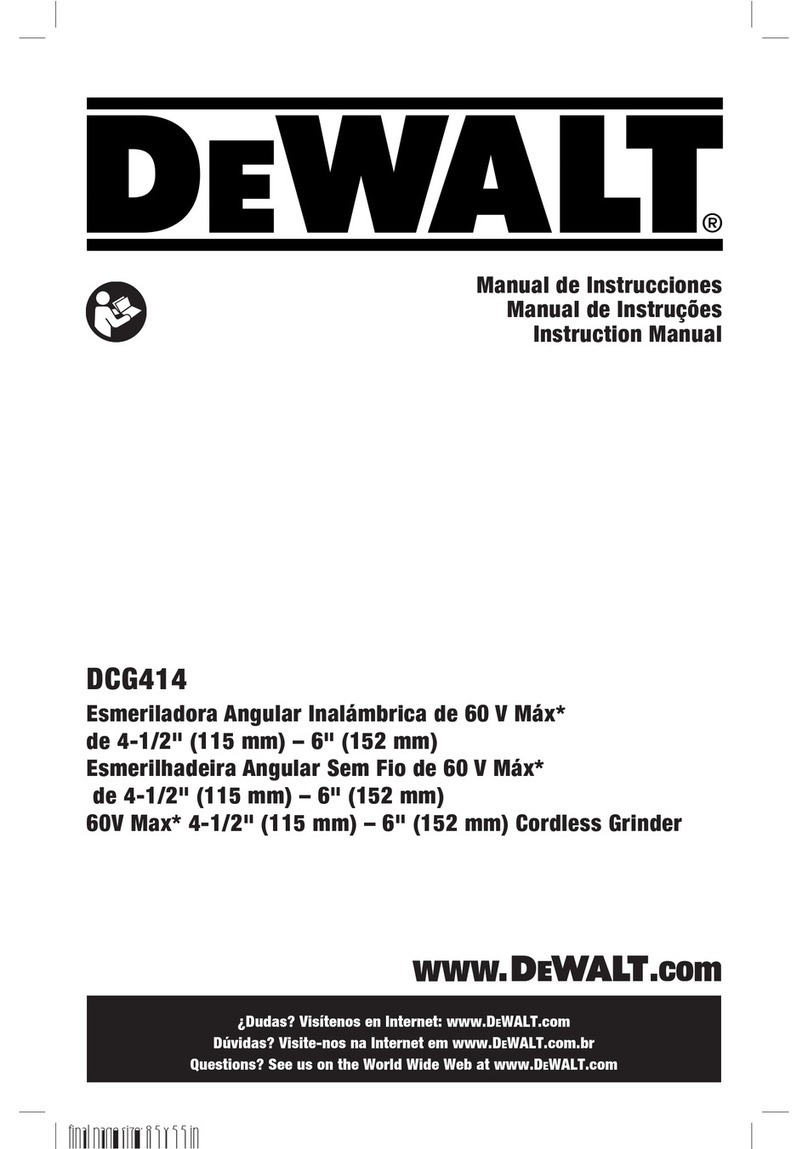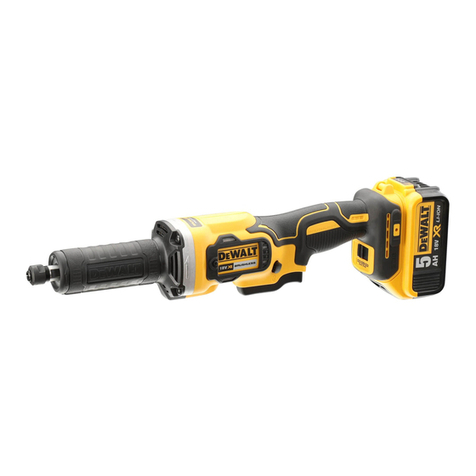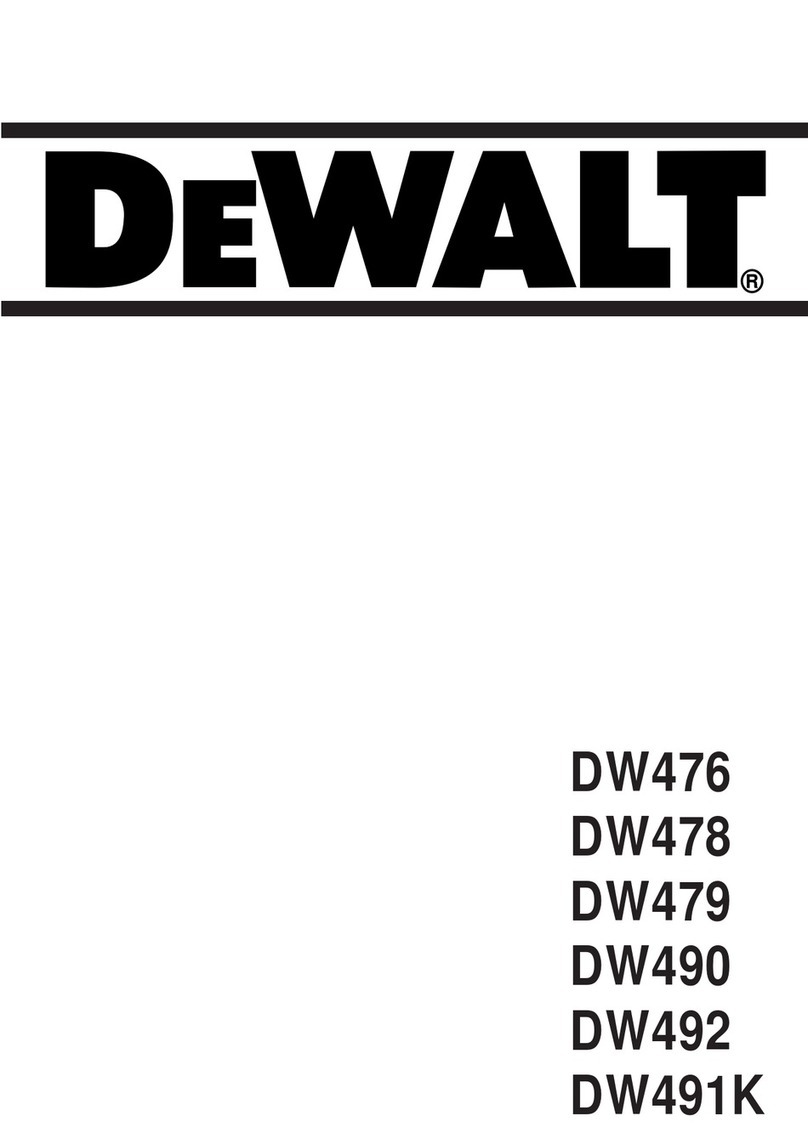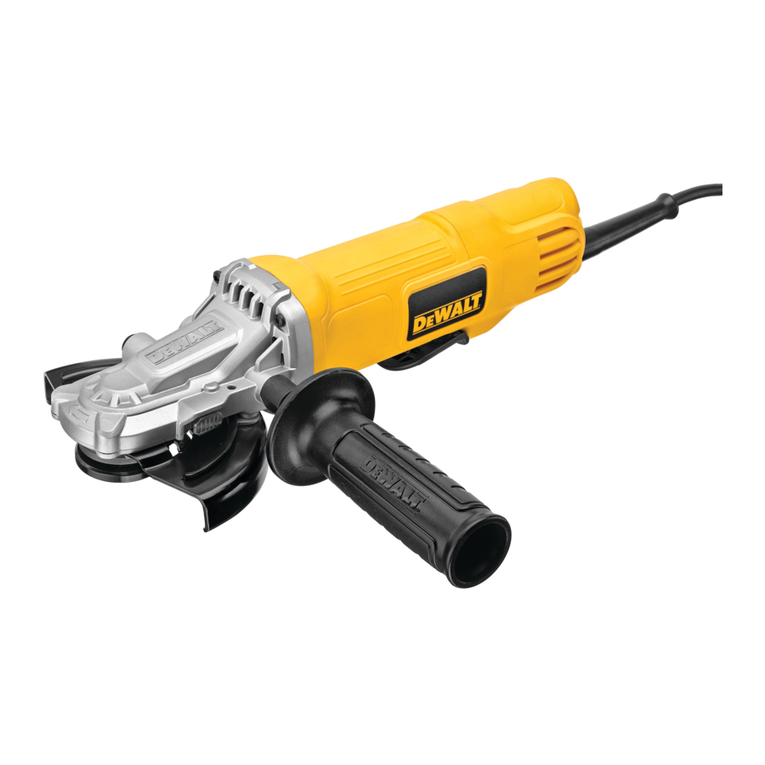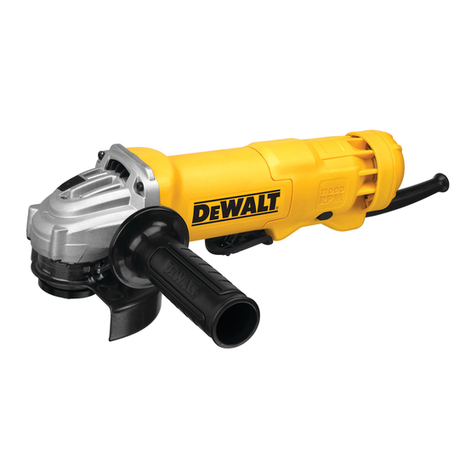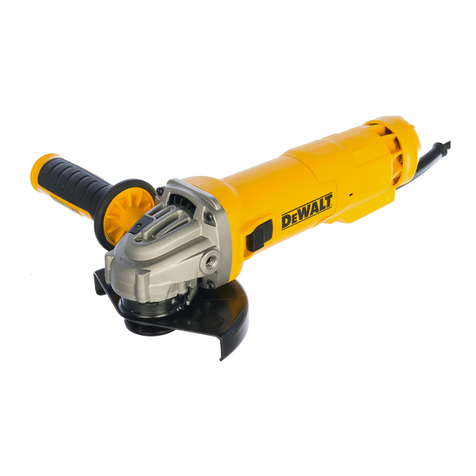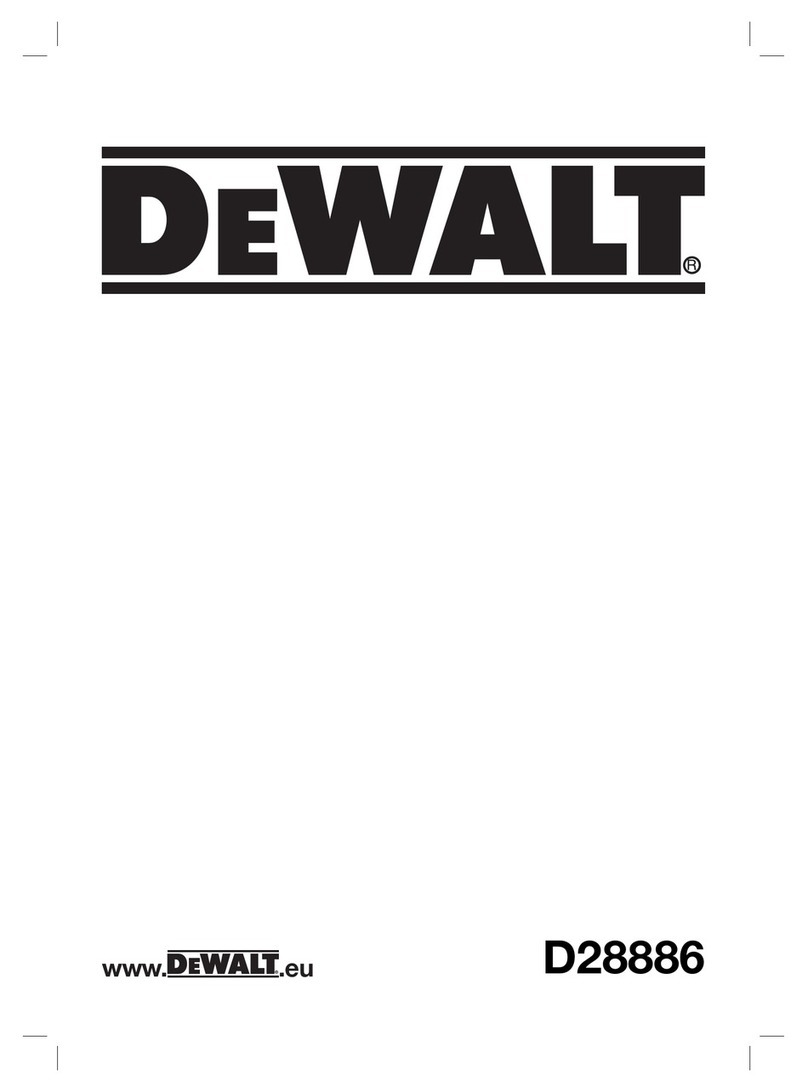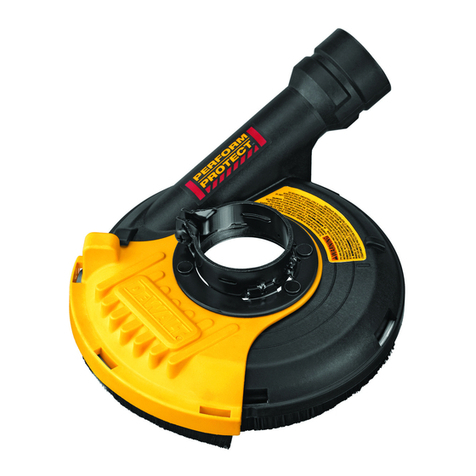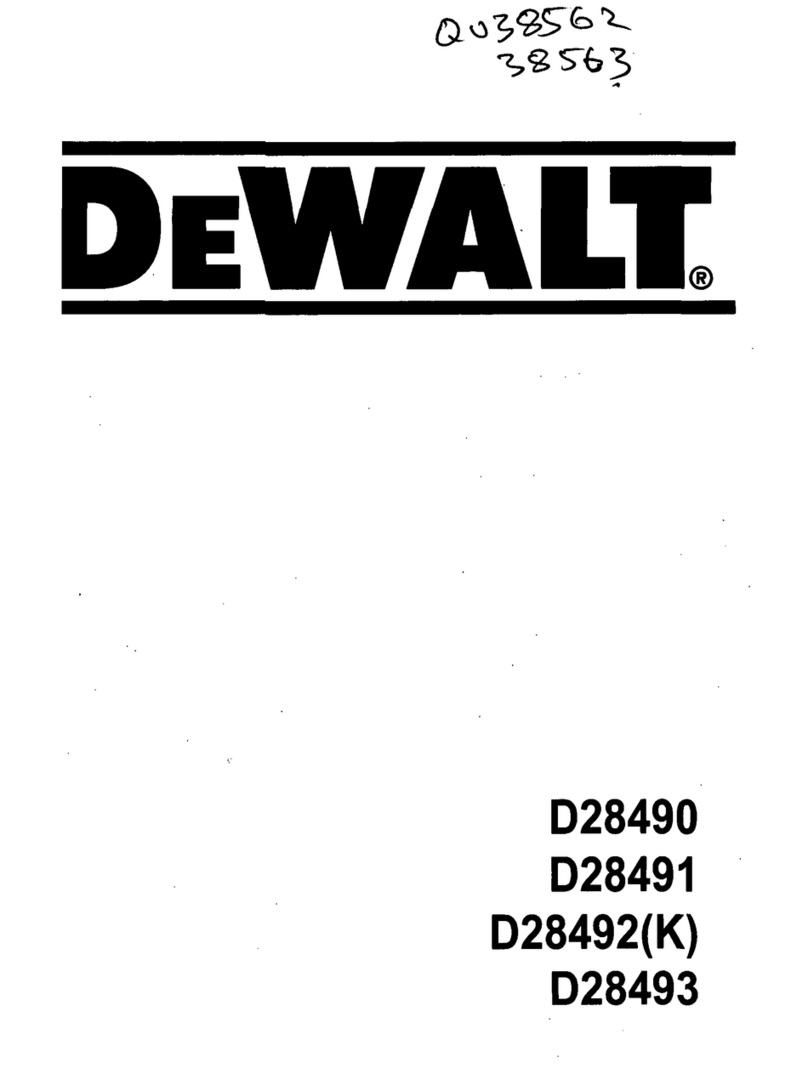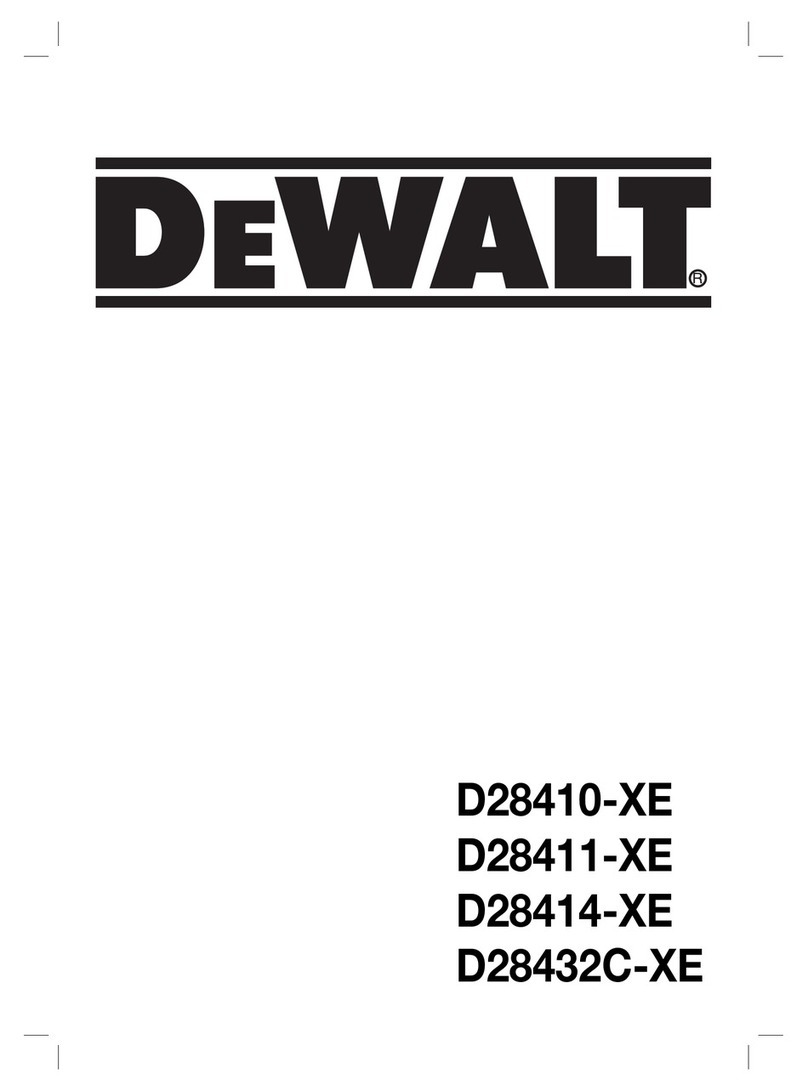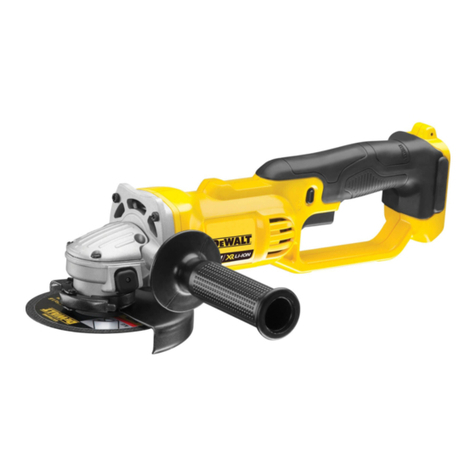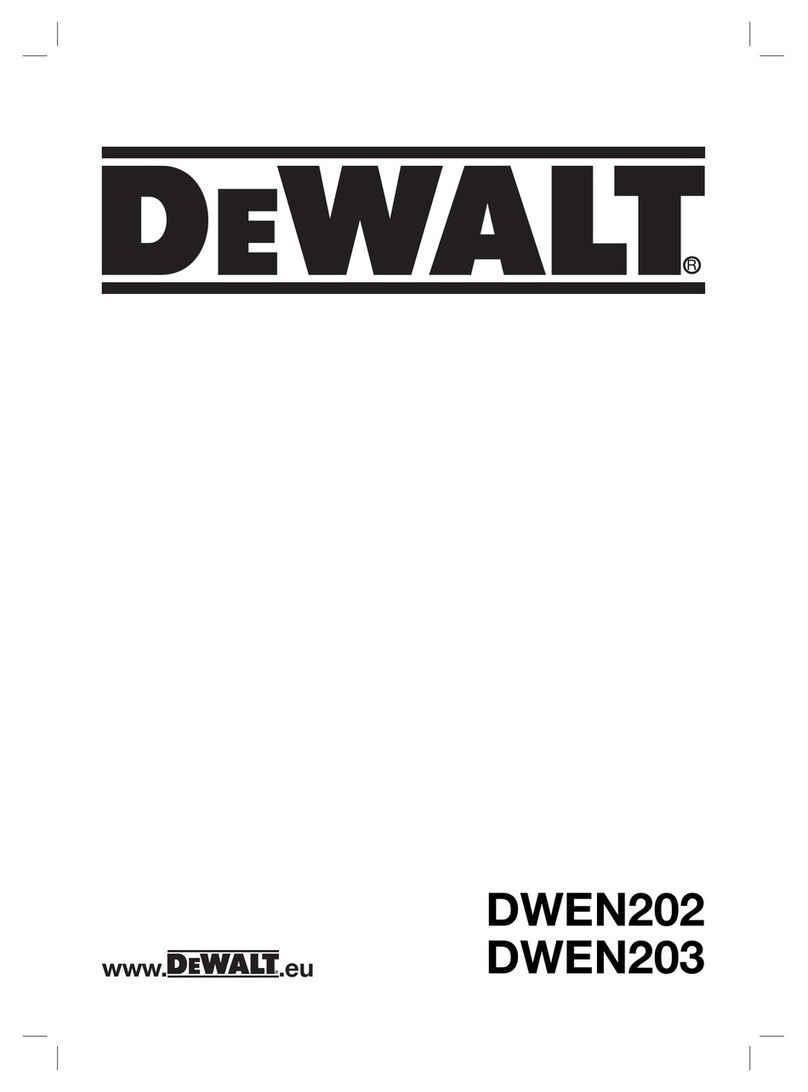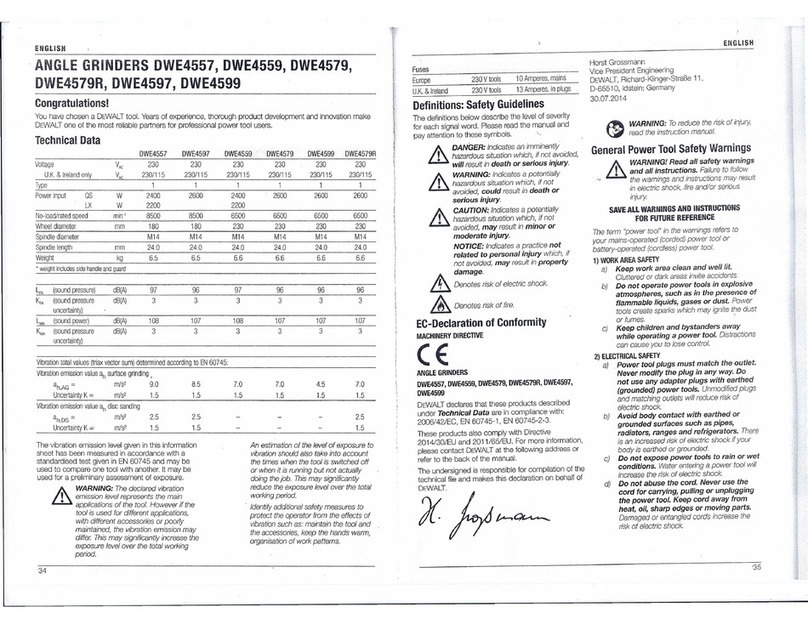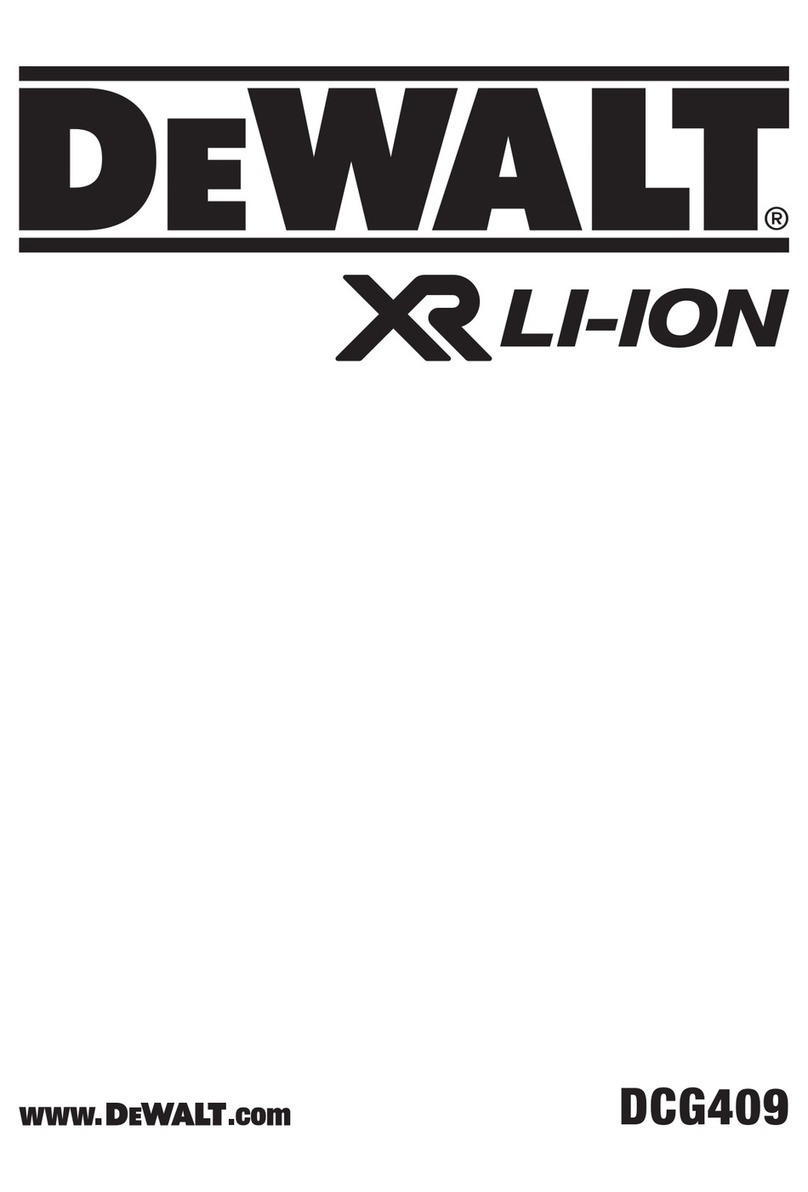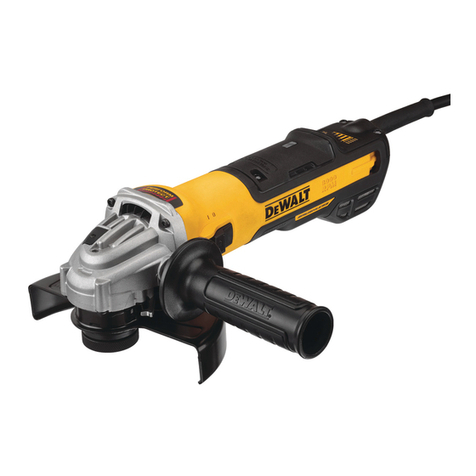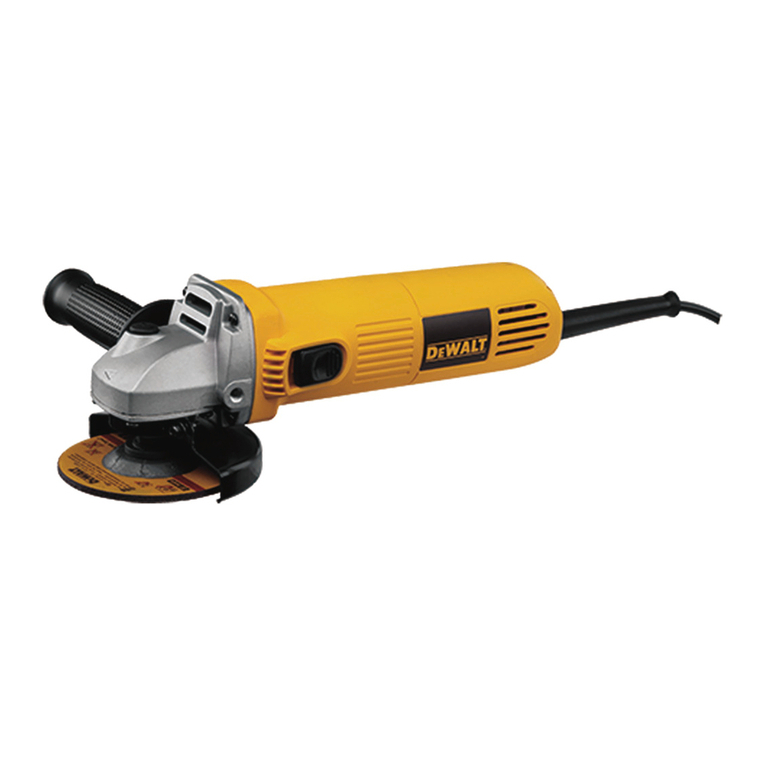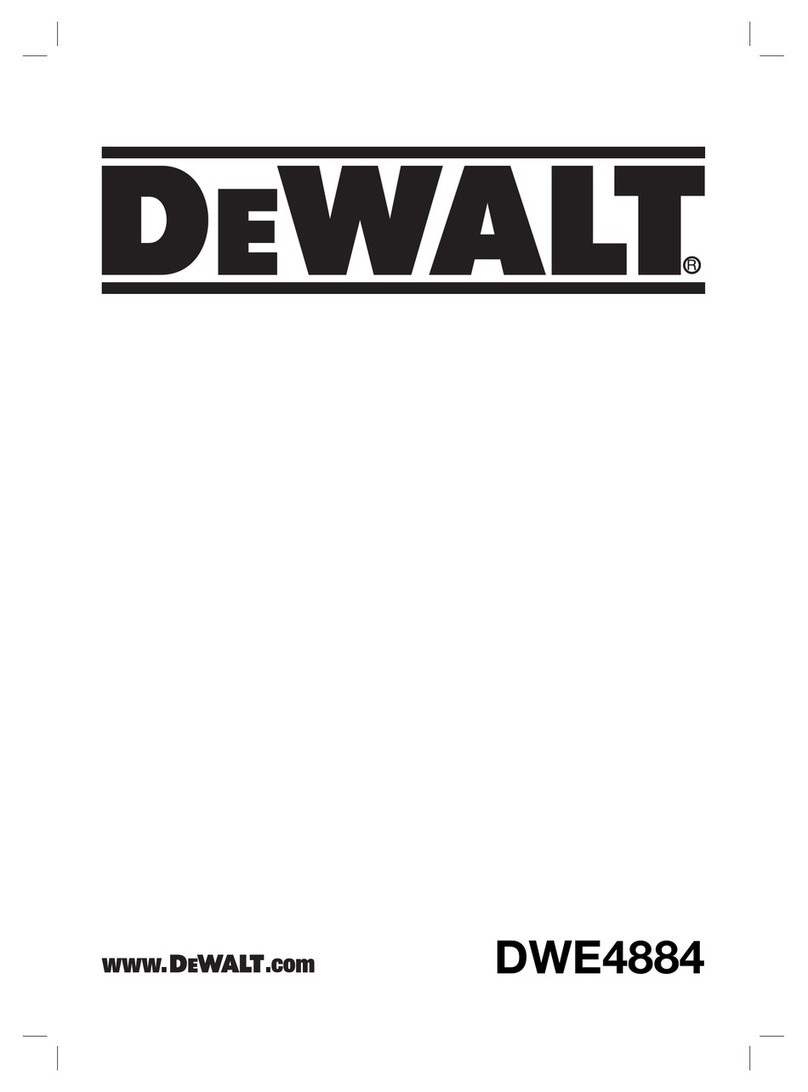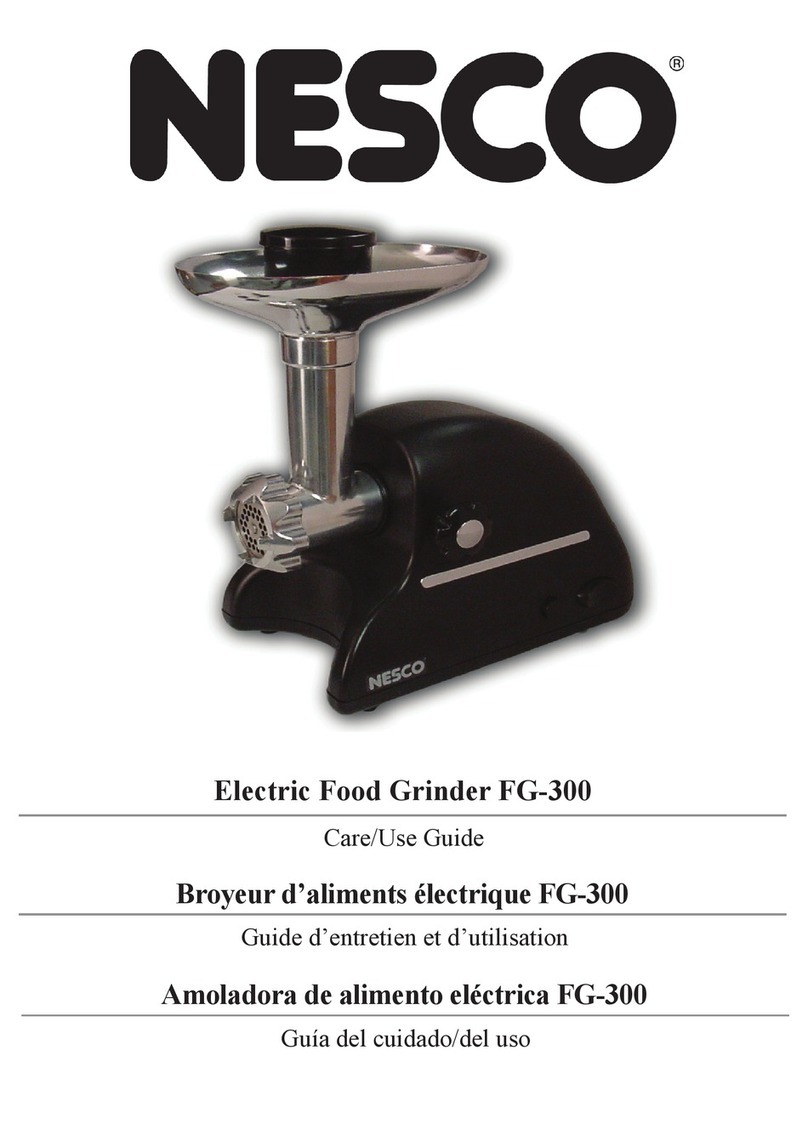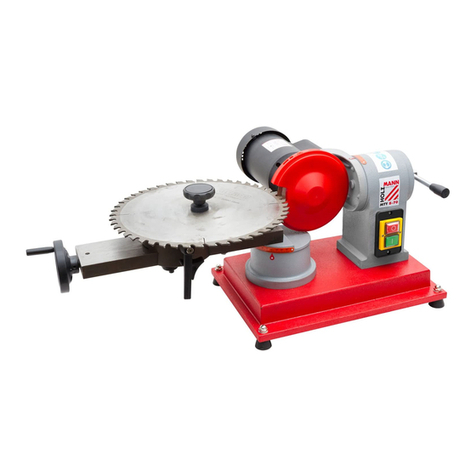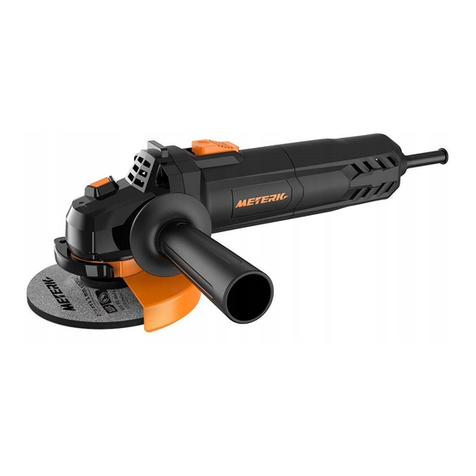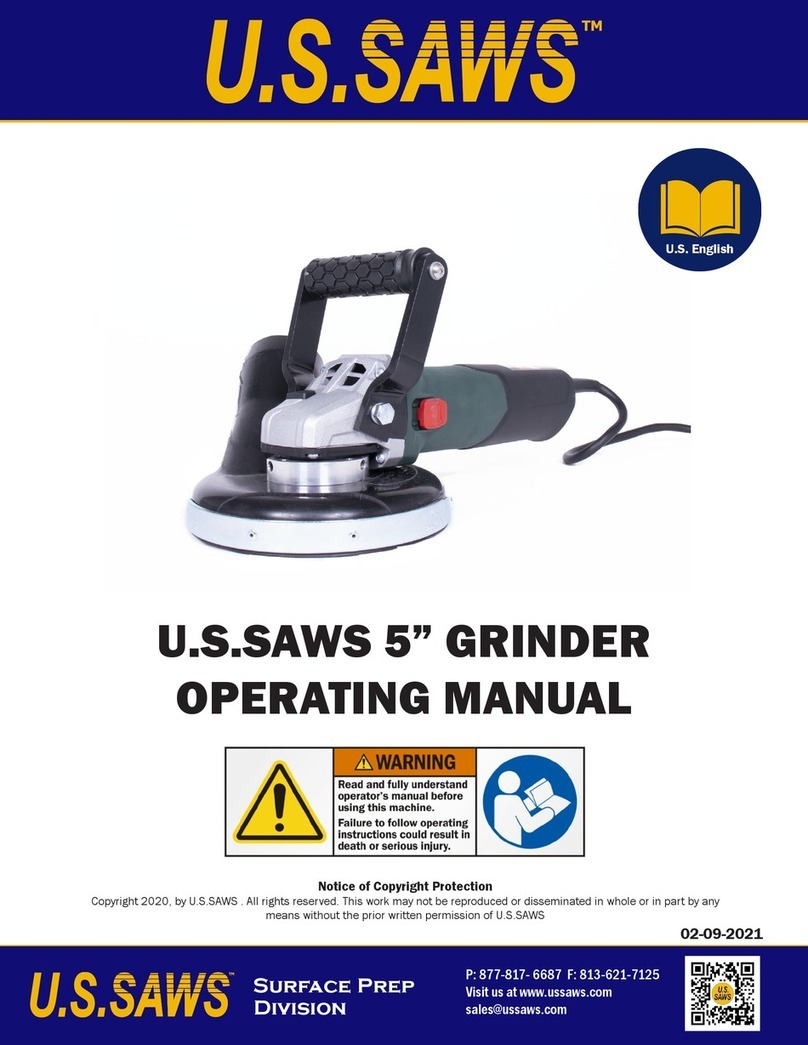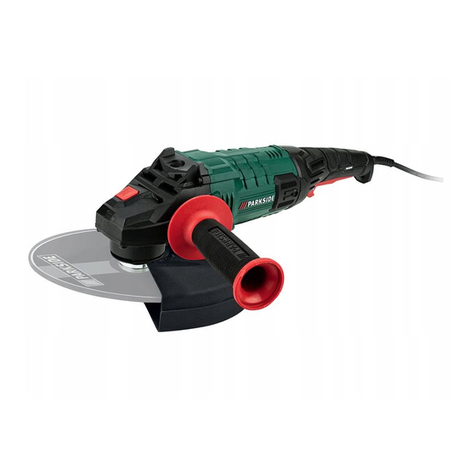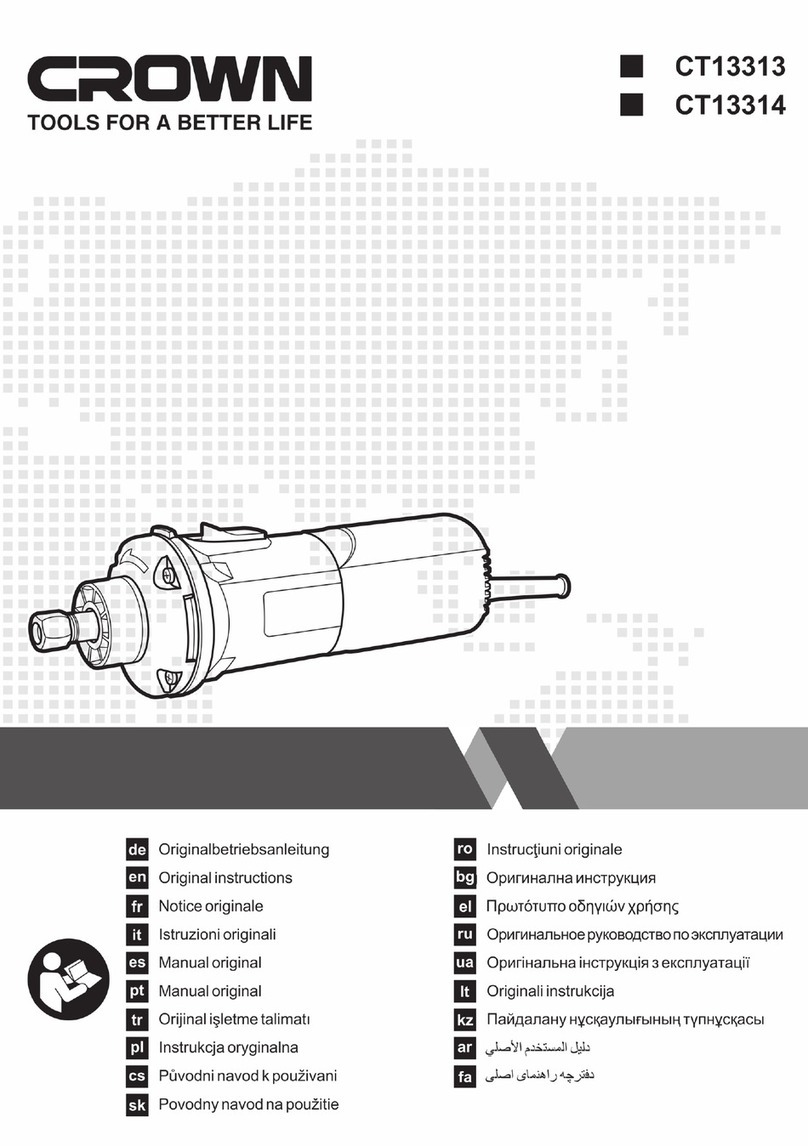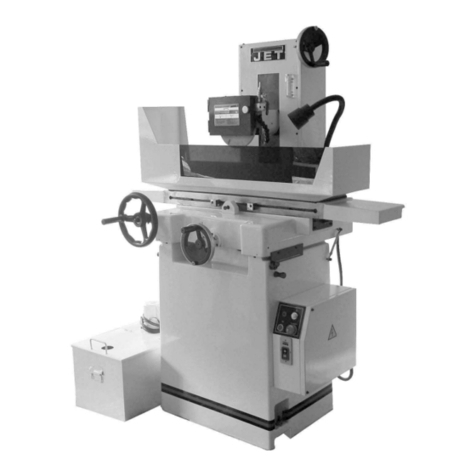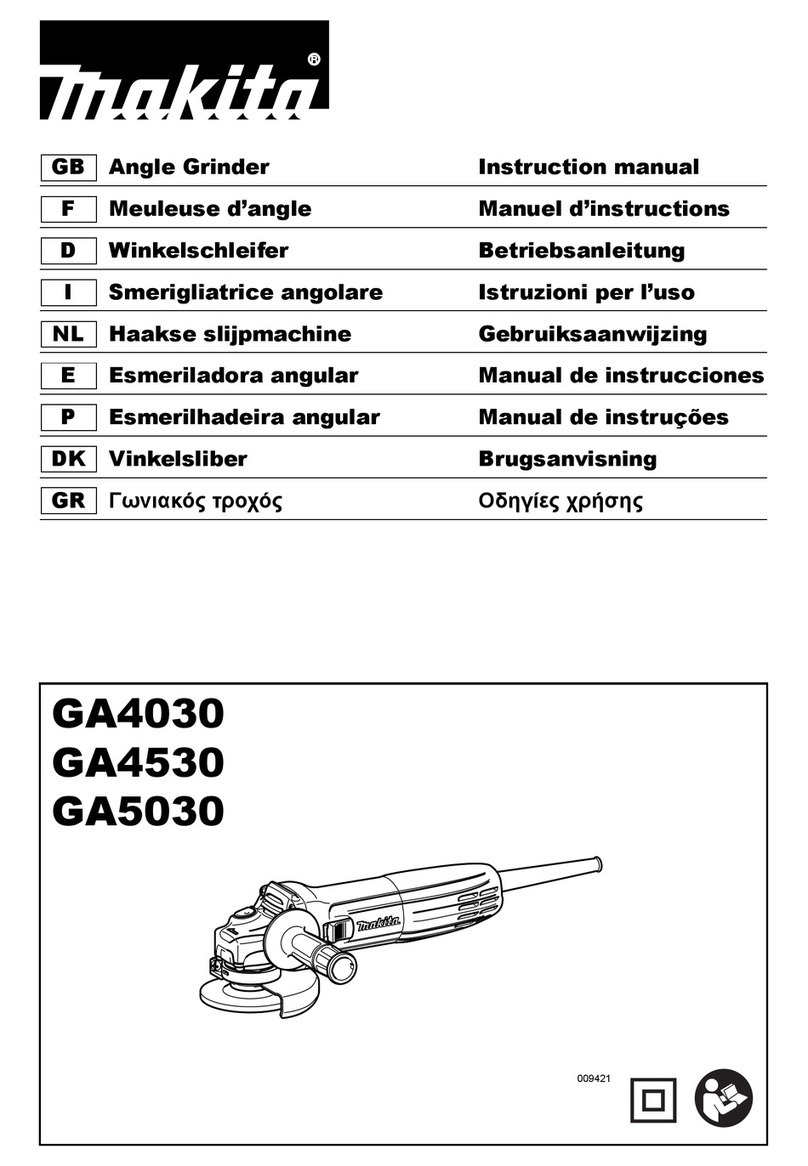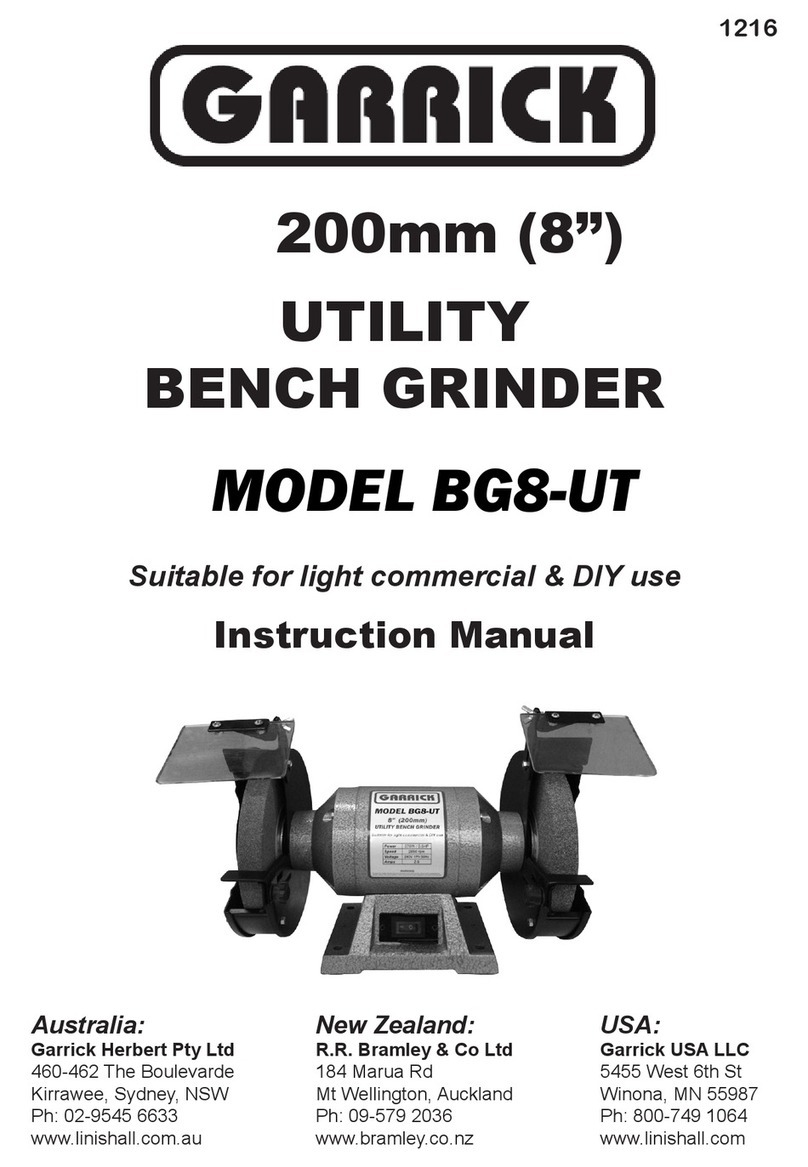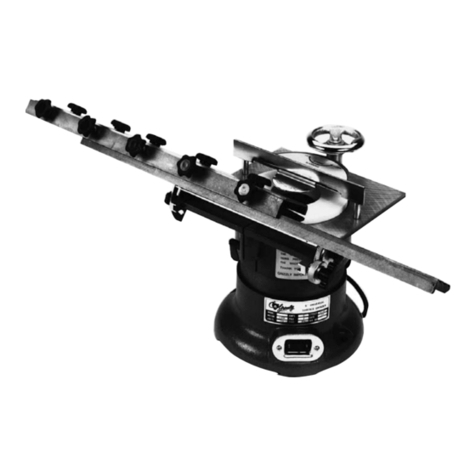function. Check for alignment of moving parts, binding of moving
parts, breakage of parts, mounting, and any other conditions that
may affect its operation. A guard or other part that is damaged
should be properly repaired or replaced by an authorized service
center unless otherwise indicated elsewhere in this instruction
manual. Have defective switches replaced by authorized service
center. Do not use tool if switch does not turn it on and off.
• KEEP GUARDS IN PLACE and in working order.
• USE RECOMMENDED ACCESSORIES. Consult the owner's
manual for recommended accessories. The use of improper
accessories may cause risk of injury to persons.
• NEVER STAND ON TOOL. Serious injury could occur if the tool
is tipped or if the cutting tool is unintentionally contacted.
Additional Safety Instructions for
Grinders
• ALWAYS USE GUARDS AND EYE SHIELDS. WHEN
GRINDING, ALWAYS KEEP GUARDS IN PLACE.
• Use only grinding wheels having a maximum operating speed
at least as high as the “No Load RPM” marked on the tool’s
nameplate. Use only grinding wheels suitable for the speed of the
grinder.
• Use only flanges furnished with the grinder.
• Adjust distance between wheel and work rest to maintain 1/8"
(3.18 mm) or less separation as the diameter of the wheel
decreases with use.
• Before using, inspect recommended accessory for cracks or
flaws. If such a crack or flaw is evident, discard the accessory. DO
NOT USE A GRINDING WHEEL THAT IS CRACKED OR FLAWED
IN ANY WAY.
• When starting the tool, let it run for one minute. Never start the tool
with a person in line with the wheel. This includes the operator.
• Do not grind on the sides of grinding wheels unless they are
specifically designed for that purpose.
• Do not overtighten the hex nut. This may crack the grinding wheel.
• Clean the cavity around the grinding wheel periodically.
WARNING: ALWAYS use safety glasses. Everyday eyeglasses are
NOT safety glasses. Also use face or dust mask if cutting operation is
dusty. ALWAYS WEAR CERTIFIED SAFETY EQUIPMENT:
• ANSI Z87.1 eye protection (CAN/CSA Z94.3),
• ANSI S12.6 (S3.19) hearing protection,
• NIOSH/OSHA/MSHA respiratory protection.
WARNING: Some dust created by power sanding, sawing,
grinding, drilling, and other construction activities contains
chemicals known to the State of California to cause cancer, birth
defects or other reproductive harm. Some examples of these
chemicals are:
• lead from lead-based paints,
• crystalline silica from bricks and cement and other masonry
products, and
• arsenic and chromium from chemically-treated lumber.
Your risk from these exposures varies, depending on how often you
do this type of work. To reduce your exposure to these chemicals:
work in a well ventilated area, and work with approved safety
equipment, such as those dust masks that are specially designed to
filter out microscopic particles.
• Avoid prolonged contact with dust from power sanding,
sawing, grinding, drilling, and other construction activities.
Wear protective clothing and wash exposed areas with
soap and water. Allowing dust to get into your mouth, eyes, or
lay on the skin may promote absorption of harmful chemicals.
WARNING: Use of this tool can generate and/or disperse dust,
which may cause serious and permanent respiratory or other
English
3
